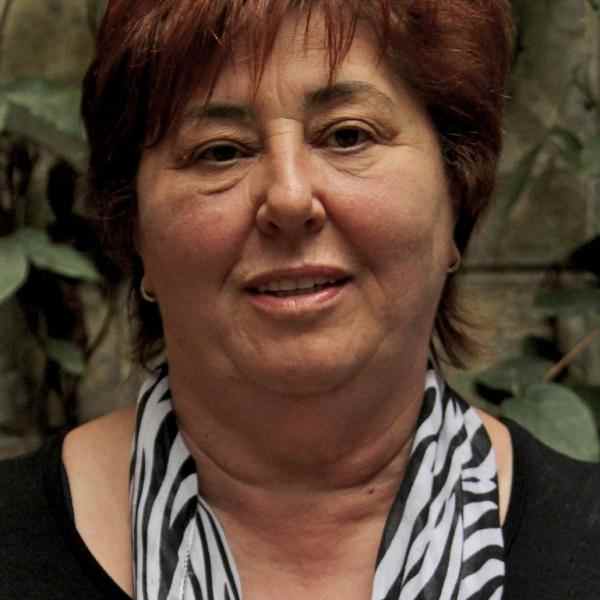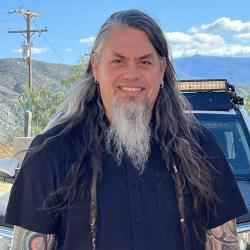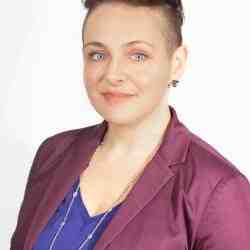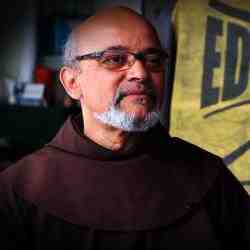Introduction
Erzsébet Szekeres has created a nationwide program for training, employing and housing disabled adults. As a result of her efforts, her hometown has become a principle locus of activity for the disabled in Hungary.
The New Idea
Erzsébet Szekeres has developed a program to address three of the most difficult problems that disabled adults face in Hungary - a lack of job training, few employment opportunities, and a housing shortage. By addressing these issues, she is helping the disabled to be as independent as possible and is replacing the outdated, paternalistic approach of the state toward this segment of society. During her own experience of trying to provide the best possible care for her disabled son, Tibor, Erzsébet quickly realized that the only way the fate of the disabled in Hungary would improve would be for them and their families to organize and begin to replace the state's inadequate services.
The comprehensive nature of Erzsébet's normalization and integration work is what sets her apart from other disability programs in Hungary. Whereas other programs and organizations may focus on one particular area of need, such as housing or employment, Erzsébet recognizes that in a context of poor or nonexistent services and facilities for the disabled, a macro-approach is more likely to improve the overall quality of life for the disabled. Her approach addresses all of the fundamental components for a happy and productive life. First, she provides educational/training opportunities for young adults and then helps to place them in work environments where they can apply the skills that they have learned. In addition, she has developed a network of specially designed housing units for her clients so that they might have the greatest degree of independence possible. Finally, she is also providing comprehensive psychological counseling for both clients and their families.
The Problem
In Hungary, the lack of integration of disabled people into society is extreme. Disabled people are not welcomed on the streets, nor can they gain access to public buildings or public transportation. There are no state-run training or employment programs; the state solution is institutionalization for life. There is little governmental expenditure on providing equality of opportunity or access in Hungary for the disabled. In fact, the first case of discrimination related to access to a public school is only now in process. An American lawyer is defending the case of a young, courageous sixteen-year-old in a wheel chair who has been denied admittance to a school based solely upon her disability, even though under current legislation schools are required to mainstream disabled students. Despite this legislation, little integration has occurred.
The families of disabled children are left to their own coping devices, because there is no one to whom they can turn. The situation has improved to some extent since 1989, but still the institutional situation for the disabled young people and adults in Hungary is horrifying. Many of these young adults, reduced to a passive state, suffer from drug abuse and alcoholism, problems which are not at all confronted by the state.
The Strategy
When Erzsébet's disabled son turned six, she realized that though he was, like any child, likely to grow to adulthood, there was no place for him or others like him in society. There were no workplaces that would accept him, no schools, and no homes. This was when she realized that the parents and children would have to fight for their rights as equals in society, and she began to organize. During her first organizational years, she spent a month of each year in Austria or Yugoslavia, seeing how programs worked there. Recently, she acquired a preschool and building from the local government in Csömör and another outside of Budapest, one of the many abandoned cooperatives in Hungary.
Construction on these sites has begun and is nearly completed in Csömör, where a dormitory already houses 22 disabled adults. This is designed as temporary shelter, since the disabled tenants will later move into shared housing, either apartments or small houses. At the moment Erzsébet has eighteen such housing units. The optimal model for living, she found, is two nondisabled (these can be co-workers, grandparents, etc.) who live with one disabled person. She explains that it took a lot of convincing and discussion with the architects and builders and that she did not want to create yet another "institutional-like" setting for the housing. Her homes and apartments are very much designed in accordance with the personal needs and desires of the people who are going to live there.
She obtained financial assistance and loans from the Ministry of Welfare, a loan from the National Association of the Disabled, and one from a private sponsor to begin the training programs. These consist of basic skills training, vocational training, and job placement. Often the disabled teach each other and make up part of the network of trainers. Groups or circles are formed, for an assembly line mode of production. Each individual completes a task he or she is capable of, and the item is then passed on to the next person for another operation. Quality is considered the highest priority, and the work is guaranteed to be 100 percent accurate and flawless. Businesses have become increasingly interested in Erzebet's project, because it is a source of cheap, quality labor. Recently her clients completed work on satellite antennas for the local military authorities and the construction of fluorescent light bulbs for a local business. Her program is so well known nationally that institutions and families from all over the country send young people between the ages of fourteen and twenty to take part in her programs.
In the future, she envisions and has made plans for a large shared workplace that includes housing. Here there will be 24-hour care in the dormitory so she can house and employ even severely disabled young adults. In addition, because many of the parents of these children are getting older, she wants to rid them of the anxiety of what will happen to their children if they die. She wants to provide security for the disabled over the long term in a noninstitutional setting. She is also exploring how it would be possible to teach the severely disabled how to read and possibly write. She thinks it is catastrophic that these people are unable to learn these very necessary functions. She is investigating methods in Europe and America, but so far she has had little success in finding existing programs like this.
The Person
Erzsébet's work today, she says, is based on her personal experiences with her son, Tibor. Her work requires new, creative solutions for people who have great communication problems. Sometimes she works individually with the disabled and with families and goes to the workplaces and checks on how things are going. She also oversees the weekly meeting of the work groups and house meetings. In addition, every month she visits the local government to inform them about her activities and request further assistance. She says she always has lots of ideas in her head, and when a possible funding source develops she expresses her ideas to colleagues who do the actual writing of the proposal. She says that that she often finds the right solutions by asking the question, "Would this be a good solution for my own son?" Besides Tibor, Erzsébet, a single mother, is raising another disabled son whom she has adopted. She is interested and trained in ceramics and held leadership roles in the companies where she worked before her son was born. After his birth, she stayed at home to care for him until she founded her organization with the purpose of ensuring that he, and others like him, had the chance for a better future.




